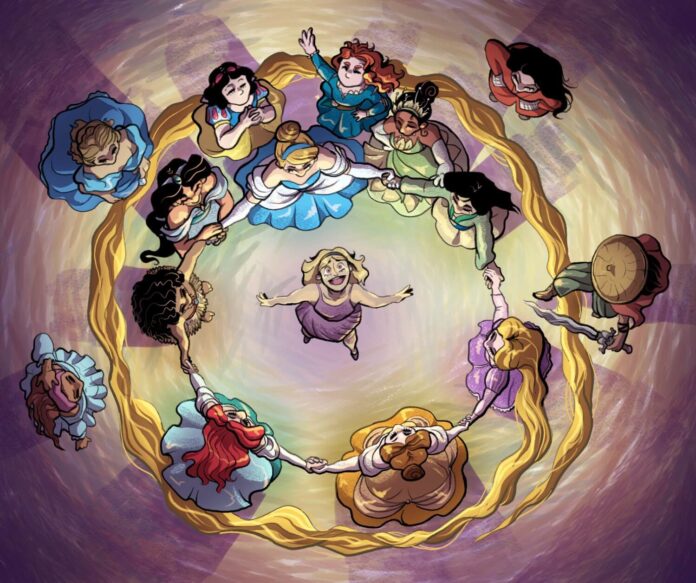My favorite Disney movie as a kid was “Cinderella.” If I said that to you face to face, you might be a little surprised. The person I’ve grown into does not look like the kind of person who enjoyed a swooning romance, a rags-to-riches tale, a story where the girl gets swept off her feet by Prince Charming (literally).
As a kid, all I cared about were the pretty pictures moving across the screen, the catchy songs and, of course, the comedic talking animals. I would watch “Cinderella” over and over again and never tire of it, even going so far as to have my parents purchase me the deluxe edition DVD that had animation concept art and extra discs with cut scenes. I couldn’t get enough. I needed to immerse myself in “Cinderella.”
But as I’ve grown up, my love for “Cinderella” has faded, and I’ve finally figured out why. After realizing I was queer in middle school, I began to seek out narratives that told the stories of people like me. At first, I felt myself limited to books and comics; there wasn’t a plethora of movies or TV shows targeted towards a young queer audience. There definitely wasn’t a popular show with visible queer characters and stories like “Heartstopper.” Disney certainly wasn’t putting out much in the way of queer representation for young audiences — unless you count the accidental and implicit bisexuality of Li Shang in “Mulan” as representation — until “The Owl House,” a show that made its debut in 2020. The show was a beacon of queer representation for younger audiences, but Disney canceled it after three seasons.
According to showrunner Dana Terrace, “There are a few business people who oversee what fits into the Disney brand, and one day one of those guys decided ‘The Owl House’ didn’t fit that ‘brand.'”
In the wake of Disney’s reluctance to take a stance on Florida’s Don’t Say Gay bill, I find myself less shocked than I am disappointed.
It all makes sense when I think about the big picture. Disney has always taken the easy way out when it comes to queer representation. Think about the lesbian couple in “Finding Dory” — a less “woke” viewer might think they are just good friends. The two women kissing at the end of “Star Wars: The Rise of Skywalker” were edited out for conservative countries overseas, and even then, they were relegated to the background of the scene anyway. Many queer people, myself included, saw “Luca” as an allegory for queerness, but the director confirmed that the two male leads are “just friends,” dashing the opportunity for explicit queer characters to be allowed to exist in a children’s film.
Now, it should be said that the Disney corporation is not explicitly “anti-gay.” If their core animation department doesn’t portray queerness, then that job is left to other subsidiaries. The network ABC, which is owned by Disney, has shows with queer representation such as “Modern Family” and of course, “Ellen,” the first show with a gay lead on television. The company has also been supportive of queer creatives in the past. Howard Ashman was able to write music for “Aladdin” from New York City while he received treatment for HIV because Disney built a production unit near his home, and head of production of “The Lion King” Thomas Schumacher said that the company environment was overall very supportive of him and his partner.
But is being tangentially supportive of the queer community through their subsidiaries enough? Is it enough that they treat their queer employees with the baseline of respect that should be afforded to all people? Should we praise them for doing the bare minimum when they could be doing so much more?
“Cinderella” consumed my childhood, and even today I feel a wistful type of nostalgia for it. But as I’ve grown to understand myself and my identity, I keep wishing that there was a movie as magical and beautiful as “Cinderella” that had solid queer representation — not the gay best friend, but a lead character — that I could’ve watched in my childhood. Maybe I would keep coming back to that movie, unlike “Cinderella,” which has become a relic of a past that doesn’t define who I am now.
And I’ve been one of the lucky ones. I wonder how many young queer kids would have an easier time understanding and accepting themselves if a corporation as prominent as Disney released a film or two with queer characters that were able to go on magical adventures and be with their perfect romantic interest at the end, like all the straight characters have. Yes, Disney has been gesturing towards queerness for years — see Disney’s parade of “first gay characters” and the plethora of queer-coded characters from the Renaissance villains to Ryan from “High School Musical” — but the bottom line is that they could be doing so much more. Little me who thought they were straight for 12 whole years really would have benefitted from seeing another queer person on screen instead of Cinderella.
Contact Siena Cawrse at cawrse@oxy.edu
![]()




































The thing is, the movie would be made for a small minority (statistically speaking). Films are made for the masses, and if the masses don’t relate to a film, they wont watch it. So why would a company want to make a film they know only a small audience would be interested in?